*NURSING > QUESTIONS & ANSWERS > Neuroscience6e Ch07 Test Bank Questions and Answers Graded A (All)
Neuroscience6e Ch07 Test Bank Questions and Answers Graded A
Document Content and Description Below
Test Bank to accompany Neuroscience, Sixth Edition Purves • Augustine • Fitzpatrick • Hall • LaMantia • Mooney • Platt • White Chapter 7: Molecular Signaling within Neurons Multiple... Choice 1. Which type of signaling do mature neurons most commonly use to communicate? a. Electrical only b. Chemical only c. A combination of electrical and chemical d. Paracrine e. Endocrine Answer: b Textbook Reference: Strategies of Molecular Signaling Bloom’s Level: 2. Understanding 2. The effector molecule at the synapse of an intercellular signal transduction process is a(n) a. ion. b. ion channel. c. neurotransmitter molecule. d. synaptic vesicle. e. G-protein. Answer: b Textbook Reference: Strategies of Molecular Signaling Bloom’s Level: 2. Understanding 3. What is the greatest advantage of the chemical signal transduction scheme? a. Signal amplification b. Activation of remote targets c. Activation of immediate targets d. Sequential nature e. Specificity Answer: a Textbook Reference: Strategies of Molecular Signaling Bloom’s Level: 2. Understanding 4. Which molecule belongs to a class of cell-associated signaling molecules? a. Thyroxin b. Integrin c. Acetylcholine d. Testosterone e. Nitric oxide Answer: b Textbook Reference: Activation of Signaling Pathways Bloom’s Level: 1. Remembering 5. Cell-permeant signaling molecules bind to which type of receptor? a. Channel-linked b. Enzyme-linked c. G-protein–coupled d. Intracellular e. All of the above Answer: d Textbook Reference: Receptor Types Bloom’s Level: 1. Remembering 6. Most enzyme-linked receptors affect the function of the target cell by a. phosphorylating intracellular target proteins. b. catalyzing synthesis of hormones in the cytoplasm. c. facilitating the assembly of the cytoskeleton. d. generating an action potential. e. dimerizing. Answer: a Textbook Reference: Receptor Types Bloom’s Level: 2. Understanding 7. To which subunit(s) of heterotrimeric G-protein does a guanine nucleotide bind? a. α b. β c. βγ subunit complex d. γ e. δ Answer: a Textbook Reference: G-Proteins and Their Molecular Targets Bloom’s Level: 1. Remembering 8. Which of the following is the first step in the process of activation of a heterotrimeric G-protein? a. The α subunit binds to β and γ subunits to form the inactive trimer. b. The α subunit binds to GDP. c. The G-protein binds to the activated receptor. d. The α subunit dissociates from the βγ complex. e. The α subunit binds to downstream effector molecules. Answer: c Textbook Reference: G-Proteins and Their Molecular Targets Bloom’s Level: 4. Analyzing 9. In what way does the function of monomeric G-proteins differ from that of heterotrimeric G-proteins? a. Monomeric G-proteins are active in the GTP-bound state, heterotrimeric G-proteins are not. b. Heterotrimeric G-protein activation is controlled by guanine nucleotide exchange factors, monomeric G-protein activation is not. c. Heterotrimeric G-proteins relay signals from cell surface receptors to intracellular targets, monomeric G-proteins do not. d. Monomeric G-protein activity is terminated by hydrolysis of GTP, heterotrimeric Gprotein activity is not. e. Heterotrimeric G-protein activity is regulated by GAP proteins, monomeric G-protein activity is not. Answer: b Textbook Reference: G-Proteins and Their Molecular Targets Bloom’s Level: 4. Analyzing 10. Which molecule is an effector directly downstream of an activated G-protein? a. Phospholipase C b. IP3 c. cAMP d. Protein kinase C e. Protein kinase A Answer: a Textbook Reference: G-Proteins and Their Molecular Targets Bloom’s Level: 1. Remembering 11. Which role does calmodulin play in the intracellular cascade triggered by Ca2+? a. It modulates the strength of Ca2+ binding to its downstream targets. b. It serves as a Ca2+ buffer. c. It enhances downstream effects of Ca2+ . d. It binds to its downstream targets when activated by Ca2+ . e. It serves as a Ca2+ sensor when neurotransmitter is released. Answer: d Textbook Reference: Second Messengers Bloom’s Level: 2. Understanding 12. In which direction do Ca2+ ions flow through ryanodine receptors? a. From the cytoplasm into the endoplasmic reticulum b. From the endoplasmic reticulum into the cytoplasm c. From the extracellular space into the cytoplasm d. From the cytoplasm into the extracellular space e. From the cytoplasm into synaptic vesicles Answer: b Textbook Reference: Second Messengers Bloom’s Level: 1. Remembering 13. Which second messenger originates from both extracellular and intracellular compartments? a. Ca2+ b. Cyclic AMP c. Cyclic GMP d. IP3 e. Diacylglycerol Answer: a Textbook Reference: Second Messengers Bloom’s Level: 1. Remembering 14. Which second messenger plays an important role in sensory transduction processes? a. Ca2+ b. Cyclic nucleotide c. Nucleotide d. IP3 e. Diacylglycerol Answer: b Textbook Reference: Second Messengers [Show More]
Last updated: 2 years ago
Preview 1 out of 13 pages

Buy this document to get the full access instantly
Instant Download Access after purchase
Buy NowInstant download
We Accept:

Reviews( 0 )
$11.00
Can't find what you want? Try our AI powered Search
Document information
Connected school, study & course
About the document
Uploaded On
Mar 22, 2022
Number of pages
13
Written in
Additional information
This document has been written for:
Uploaded
Mar 22, 2022
Downloads
0
Views
65










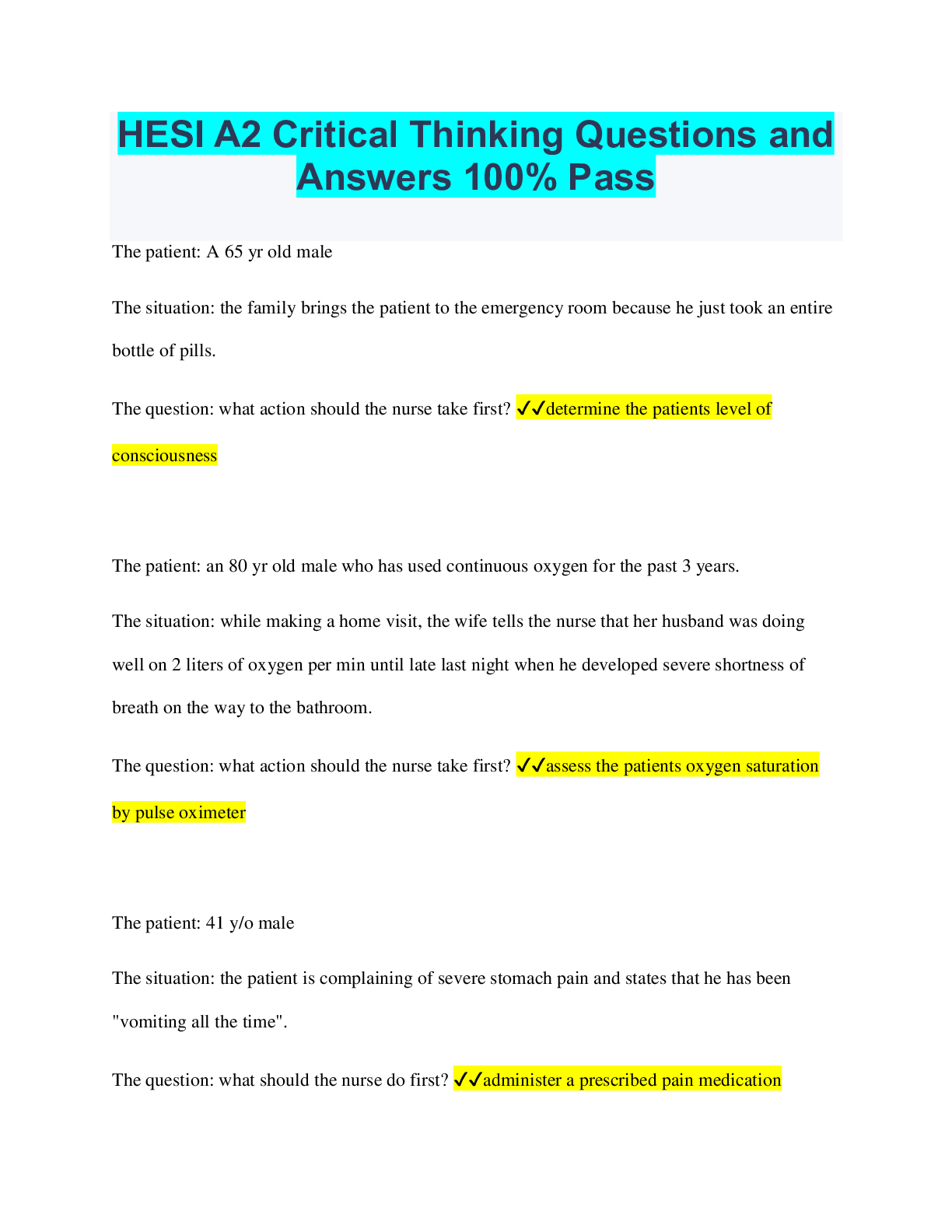
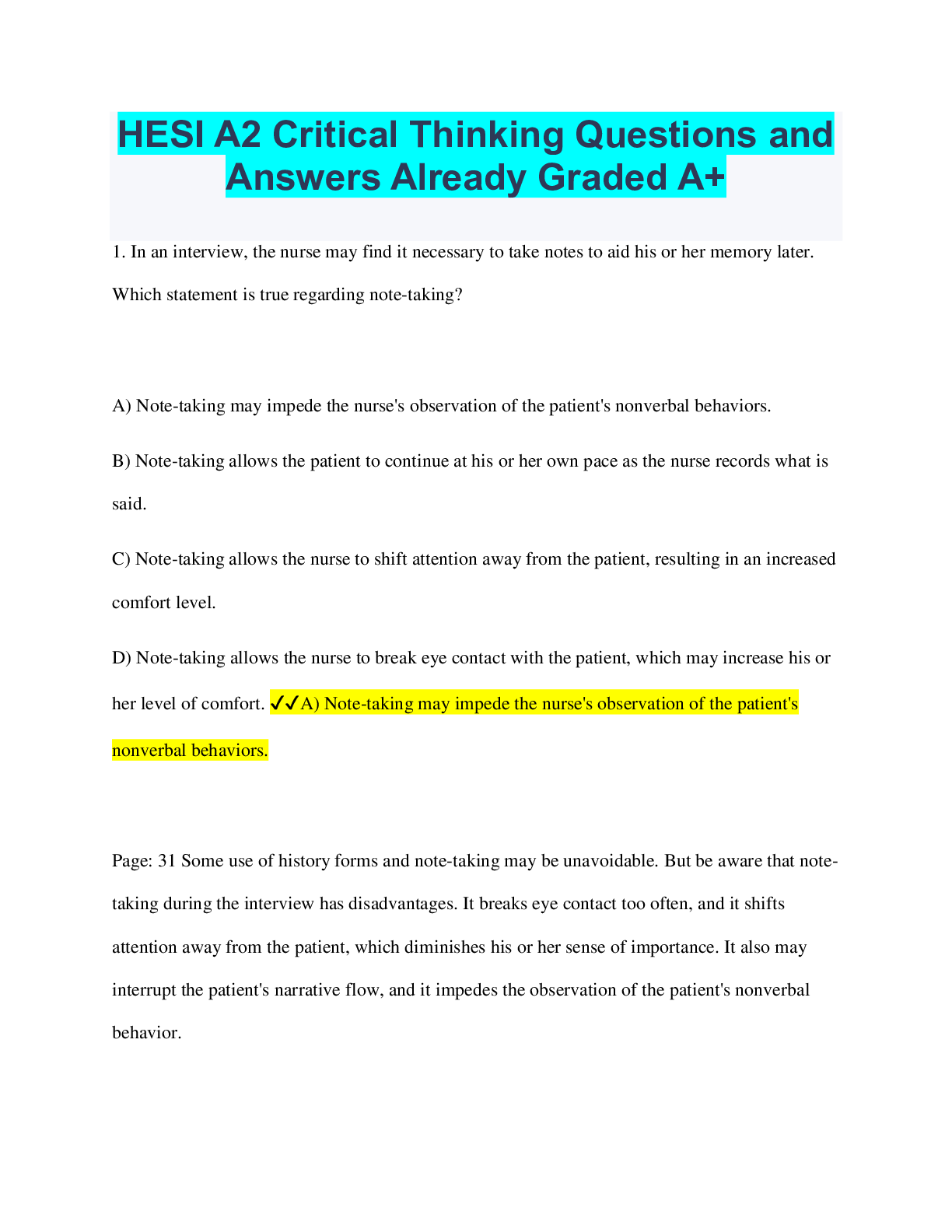
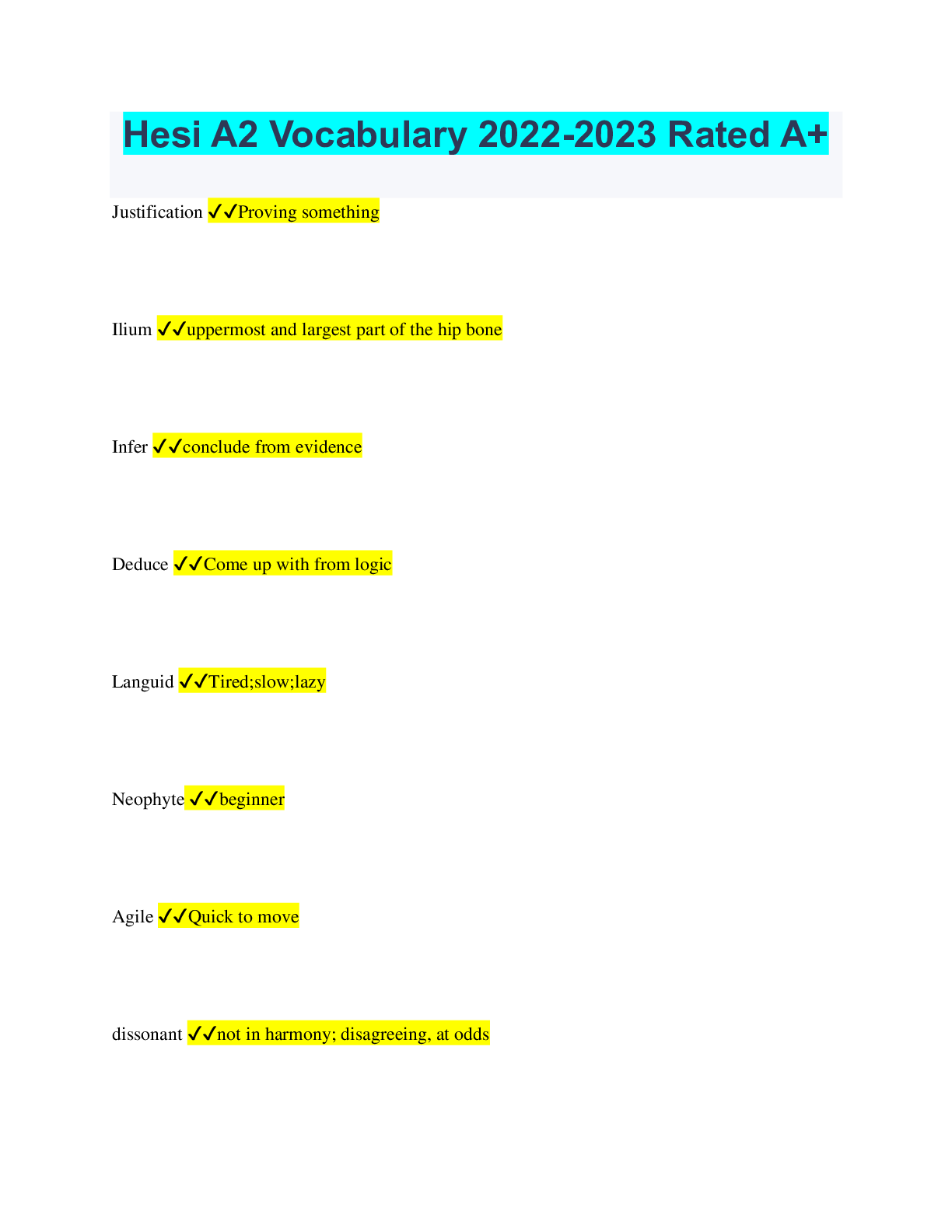



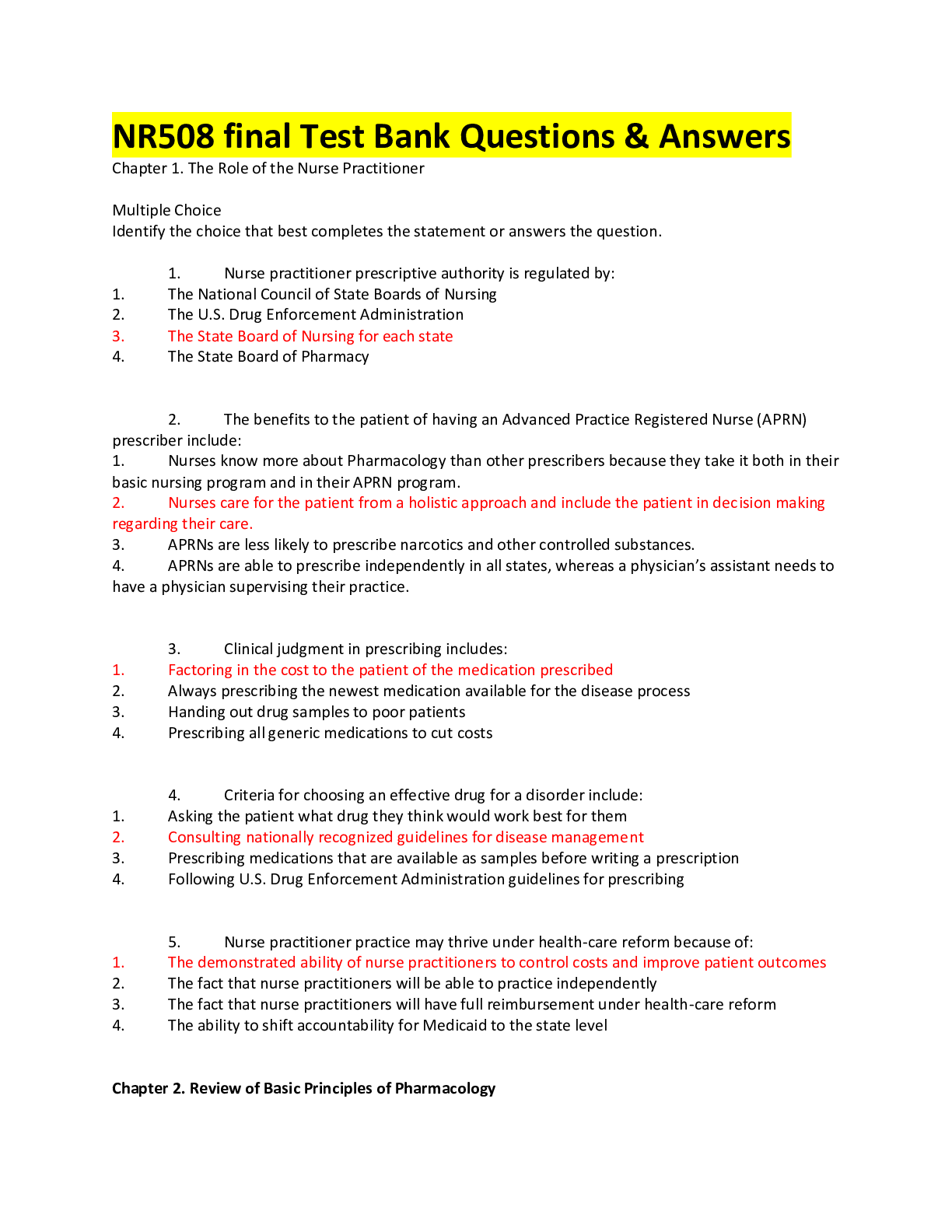

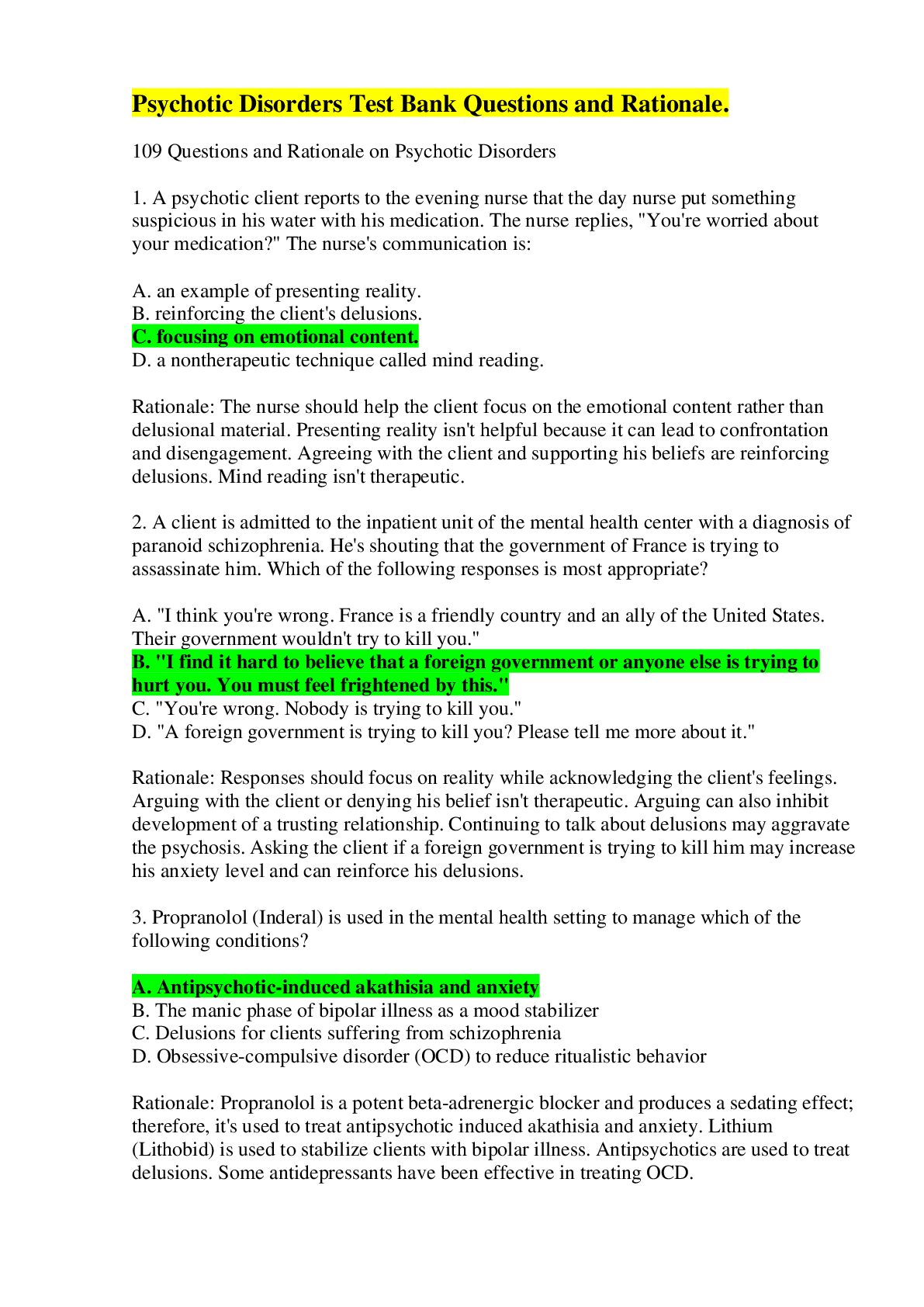


 ans.png)
, 100% Correct, Download to Score A.png)
, 100% Correct, Download to Score A.png)

